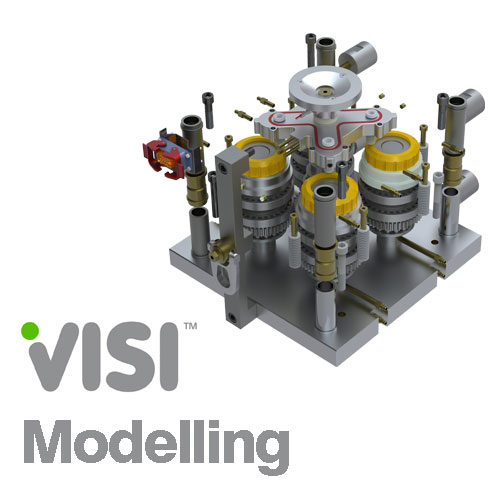Products
VISI Modelling is the foundation of all VISI products and provides a robust and powerful solid and surface modelling system based around the industry standard Parasolid® kernel.
VISI Modelling is the foundation of all VISI products and provides a robust and powerful solid and surface modelling system based around the industry standard Parasolid® kernel. Combined with Vero’s surface technology, model analysis and 2D design, VISI Modelling offers complete flexibility to construct, edit or repair the most complex 3D data.
Features at a glance:
Easy to learn intuitive interface
Extensive CAD interfaces
Industry standard Parasolid® kernel
Combined wireframe, solid & surface modelling
Solid & surface boolean operations
Surface repair & analysis
Edge tolerance manipulation
Powerful blending
Intelligent model deformation
Fast rendering & texture mapping
Mechanical curve construction
Associative tool detailing
Automatic B.O.M. creation
Extensive range of CAD interfaces. VISI can work directly with Parasolid, IGES, CATIA v4 & v5, Pro-E, UG, STEP, Solid Works, Solid Edge, ACIS, DXF, DWG, STL and VDA files. The extensive range of translators ensures that users can work with data from almost any supplier. The ability to skip corrupt records during the import process provides a platform from where the most inconsistent data can be managed. Very large files can be handled with ease and companies working with complex designs will benefit from the ease with which their customer’s CAD data can be manipulated.
True hybrid modelling. VISI provides a dynamic structure from where it is possible to work with either solid, surface, wireframe or a combination of all three without any restrictions. Solid modelling has become a fundamental cornerstone of design but is often limited to prismatic or basic geometry. Solid modelling commands include boolean technology such as unite, subtract, extrude, revolve, sweep, cavity, intersect and hollow. Surfacing technology however provides a different set to tools and techniques for more organic, free-form geometry creation. Surface modelling functions include ruled, lofted, drive, sweep, n-sided patch, drape, tangent, draft, revolved and piped surfaces. These modelling commands combined with advanced surface editing make it easy to heal imported geometry or construct the most complex 3D data.
Advanced Modelling - Deformation. Advanced Modelling provides technology that will benefit all users in every industry sector. The Advanced Modelling tools are capable of deforming geometry while maintaining model integrity and holding curvature up to G4 constraints - This is particularly important for parts of high gloss (black, white, chrome) or that have aerodynamic requirements. Model editing includes bending, twisting, stretching and deformation, which allows the CAD operator to define the start and end geometrical conditions to drive any model change. Practical applications include springback for sheetmetal, product design changes and geometry healing.




